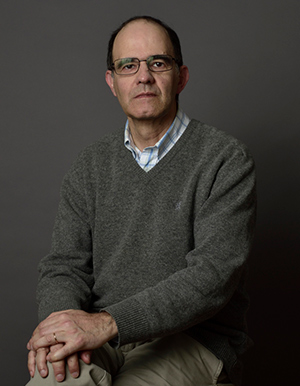Pedro Matias Lab
Macromolecular Crystallography Unit

 |
The broad goal of the Lab’s research is the structural characterization of biomolecules with potential impact in industry and/or medicine towards the understanding of their mode of action, with the aim of designing variants with enhanced properties for industrial applications or contribute to drug discovery and development pipelines targeting proteins with human health implications. The team focuses on X-ray crystallography and more recently CryoEM, and has developed several internal and external collaborations to complement the structural studies with biochemical and biophysical assays. |
|
Pedro Matias Web of Science Researcher ID B-7180-2008 ORCID 0000-0001-6170-451X Phone (+351) 214469669/609/156 |
|
 |
Research Interests
RuvBL1 (RuvB-like 1) and its homolog RuvBL2 are evolutionarily highly conserved AAA+ ATPases essential for many cellular activities. RuvBL1 and RuvBL2 are over expressed in some types of cancer and interact with major oncogenic factors, such as β-catenin and c-Myc, regulating their function. We solved the first crystal structures of the human RuvBL1 and of the human RuvBL complex with a truncated domain II. Biochemical assays showed that truncation of domain II led to a substantial increase in the ATPase and DNA helicase activities of RuvBL1, RuvBL2 and their complex, strongly suggesting that in vivo activities of these highly interesting therapeutic drug targets are regulated by cofactors inducing conformational changes via domain II in order to modulate the enzyme complex into its active state. This work was carried out in collaboration with the pharmaceutical company Bayer Schering Pharma. More recently, we also determined the crystal structure of full-length RuvBL2. Analysis of all available crystal structures of RuvBL proteins led to a proposal for how ATP binding may lead to conformational plasticity via a domain II motion through interactions with Histidine residues in a conserved N-terminal loop. Current work is aimed at the structural characterization by cryoEM of several cellular complexes involving RuvBL1 and RuvBL2.
Crystal structures of the [NiFeSe] hydrogenase from D. vulgaris Hildenborough provided a structural basis for its inactivation by oxygen: terminal Ni ligand Cys75 becomes irreversibly oxidized to sulfinate. A solvent-filled hydrophilic channel unique to [NiFeSe] that links the molecular surface to the vicinity of Cys75 was identified as a possible access route for molecular O2 or Reactive Oxygen Species to attack and oxidize Cys75 and sequence/structure alignments with other [NiFe] and [NiFeSe] hydrogenases of known crystal structure suggested mutations in two glycine residues in this channel to block its access to Cys75. Enzyme variants carrying these mutations were produced using a homologous expression system developed in the Inês Cardoso Pereira Lab, crystallized aerobically and their crystal structures determined. The G50T mutation produced a variant very similar to the wild type in terms of Cys75 oxidation whereas both G491A and G491S mutations yielded enzyme variants that greatly reduced Cys75 oxidation within a comparable time frame. Further structural analysis revealed a hydrophobic branch joining the main hydrophilic channel between the two mutations, thus presumably allowing access of molecular O2 or Reactive Oxygen Species to Cys75 and explaining the different results obtained for the three enzyme variants. Current work is aimed at designing further mutants to close this hydrophobic branch.
Group Members
- Tiago Bandeiras, iBET Merck Healthcare Lab Head
- Patrícia Borges (jointly with Lígia Oliveira Martins)
- Catarina Paiva, Ph.D. student (co-supervision with Tiago Bandeiras)
- Ana Margarida Coito, Ph.D. student (co-supervision with Inês A. C. Pereira)
- Bruno Salgueiro, Ph.D. student (co-supervision with Célia Romão and Elin Moe)
- João Catarino, M.Sc. student (co-supervision with Marta Marques, iMM)
Alumni
-
Paulo Santo, PhD
-
Sónia Zacarias, PhD
-
Rafaela Martins, MSc
-
Micael Freitas, MSc
-
Bárbara Sousa, MSc
-
Sara Silva, PhD
-
Marta Marques, PhD
-
Susana Gonçalves, PhD
-
Sabine Gorynia, PhD
Selected Publications
-
B. A. Salgueiro, M. Saramago, M. D. Tully, F. Issoglio, S. T. N. Silva, A. C. F. Paiva, C. M. Arraiano, P. M. Matias, R. G. Matos, E. Moe, E. and C. V. Romão (2024) SARS-CoV2 Nsp1 is a metal-dependent DNA and RNA endonuclease, BioMetals,
https://doi.org/10.1007/s10534-024-00596-z -
A.G. Gouveia, B.A. Salgueiro, D.O. Ranmar, W.D.T. Antunes, P. Kirchweger, O. Golani, S.G. Wolf, M. Elbaum, P.M. Matias and C.V. Romão (2023) Unraveling the multifaceted resilience of arsenic resistant bacterium Deinococcus indicus. Front. Microbiol. 14:1240798.
https://doi.org/10.3389/fmicb.2023.1240798 -
S. Zacarias, A. Temporão, P. Carpentier, P. van der Linden, I. A. C. Pereira, P. M. Matias (2020) Exploring the Gas Access Routes in a [NiFeSe] Hydrogenase using Crystals Pressurized with Krypton and Oxygen. J Biol Inorg Chem. 25:863-874. http://dx.doi.org/10.1007/s00775-020-01814-y
-
S. Zacarias, A. Temporão, M. del Barrio, V. Fourmond, C. Léger, P.M. Matias and I. A. C. Pereira (2019) “A Hydrophilic Channel Is Involved in Oxidative Inactivation of a [NiFeSe] Hydrogenase” ACS Catalysis 9:8509-8519. http://dx.doi.org/10.1021/acscatal.9b02347
-
S. T. N. Silva, J. A. Brito, R. Arranz, C. Ó. S. Sorzano, C. Ebel, J. Doutch, M. D. Tully, J.-M. Carazo, J. L. Carrascosa, P. M. Matias and T. M. Bandeiras (2018) "X-ray structure of full-length human RuvB-Like 2 – mechanistic insights into coupling between ATP binding and mechanical action", Scientific Reports 8(1):13726. http://dx.doi.org/10.1038/s41598-018-31997-z
MX Unit Website
For further information please visit the MX Unit Website
Cristalografia Aplicada à Indústria e Medicina (PT)
O objectivo global da investigação desenvolvida no meu Laboratório é a caracterização estrutural de biomoléculas com impacto potencial na indústria e/ou medicina para compreender o seu modo de ação, tendo em vista a construção de variantes com propriedades melhoradas para aplicações industriais ou para contribuir para processos de descoberta e desenvolvimento de novos medicamentos dirigidos para proteínas com implicações na saúde humana. A equipa utiliza a cristalografia de raios-X e mais recentemente a crio microscopia electrónica, e desenvolveu várias colaborações internas e externas para complementar os estudos estruturais com ensaios bioquímicos e biofísicos.







